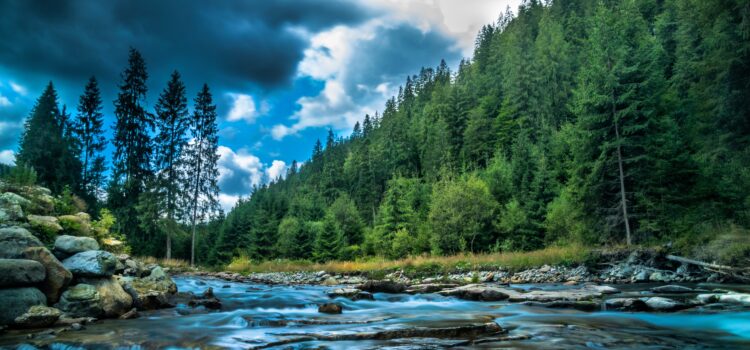

This article is an excerpt from the Shortform book guide to "The Sixth Extinction" by Elizabeth Kolbert. Shortform has the world's best summaries and analyses of books you should be reading.
Like this article? Sign up for a free trial here .
What are the habitat fragmentation effects? How did human-driven fragmentation of the earth’s landmass influence species survival?
As humans have reshaped the earth’s landmass, we’ve constrained the ability of other species to survive climate change. There are two main habitat fragmentation effects: 1) species lose the ability to move, and 2) their ability to reproduce declines.
Read about the effects of habitat fragmentation.
Habitat Fragmentation Effects and Biodiversity
Currently, the earth contains about fifty million square miles of land not covered by ice. We’ve transformed more than half—27 million square miles—into cities, highways and shopping centers, cropland and pasture, logging and mining operations, and manufacturing plants. That leaves 23 million square miles, which are mostly (three-fifths) forest; the other two-fifths are high mountains, tundra, and desert.
Another way of looking at how we use the planet is by dividing the landmass into “anthromes,” or human-altered zones, such as urban, irrigated cropland, and populated forest. Researchers have identified eighteen anthromes covering 39 million square miles. That leaves 11 million square miles of wildland, including parts of the Amazon, Siberia, northern Canada, and the deserts.
However, there’s virtually no area left that’s truly untouched—roads, logging, and mining have sliced up and cut off every wild area to some extent. There are two results: 1) species lose the ability to move or flee, and 2) their ability to reproduce declines and extinction becomes more likely.
Brazil’s Reserve 1202, a twenty-five-acre block of untouched Amazon rainforest surrounded by cut-over forest, illustrates the survival challenges we’ve created for other species.
It’s part of a string of forest “islands” known as the Biological Dynamics of Forest Fragments Project or BDFFP, an experiment enabled by cooperation between ranchers and conservationists. In the 1970s, the Brazilian government gave ranchers a stipend as an incentive to create new ranchland by clearing rainforest. At the same time, they had to leave at least half the forest on their property intact. Scientists have been studying these untouched fragments for thirty years. What they’re learning is how species respond to isolated, shrinking habitats.
Birds are an example. Reserve 1202 has at least thirteen hundred bird species. At first, birds from the surrounding deforested areas took shelter in the fragment, increasing the number of species. But gradually, the number of bird species declined. Some species, for instance, wouldn’t cross roads or cleared areas to get to the reserve. Ultimately, in all of the fragments, birds and other species experienced steady declines.
Smaller populations are more prone to extinction because they have a harder time recovering from chance disasters. For instance, the last breeding pair of a certain bird species might see its nest destroyed by a storm one year and raided by predators the next. The following year, the chicks might die of disease or turn out to be all males. So, the species eventually dies out. Depending on how accessible the habitat fragment is, new members of the species may or may not be able to recolonize it.

———End of Preview———
Like what you just read? Read the rest of the world's best book summary and analysis of Elizabeth Kolbert's "The Sixth Extinction" at Shortform .
Here's what you'll find in our full The Sixth Extinction summary :
- How humans have set in motion a sixth mass extinction
- The 5 mass extinction events that occurred over the last 500 million years
- Why human ingenuity might be able to save the human species from extinction






